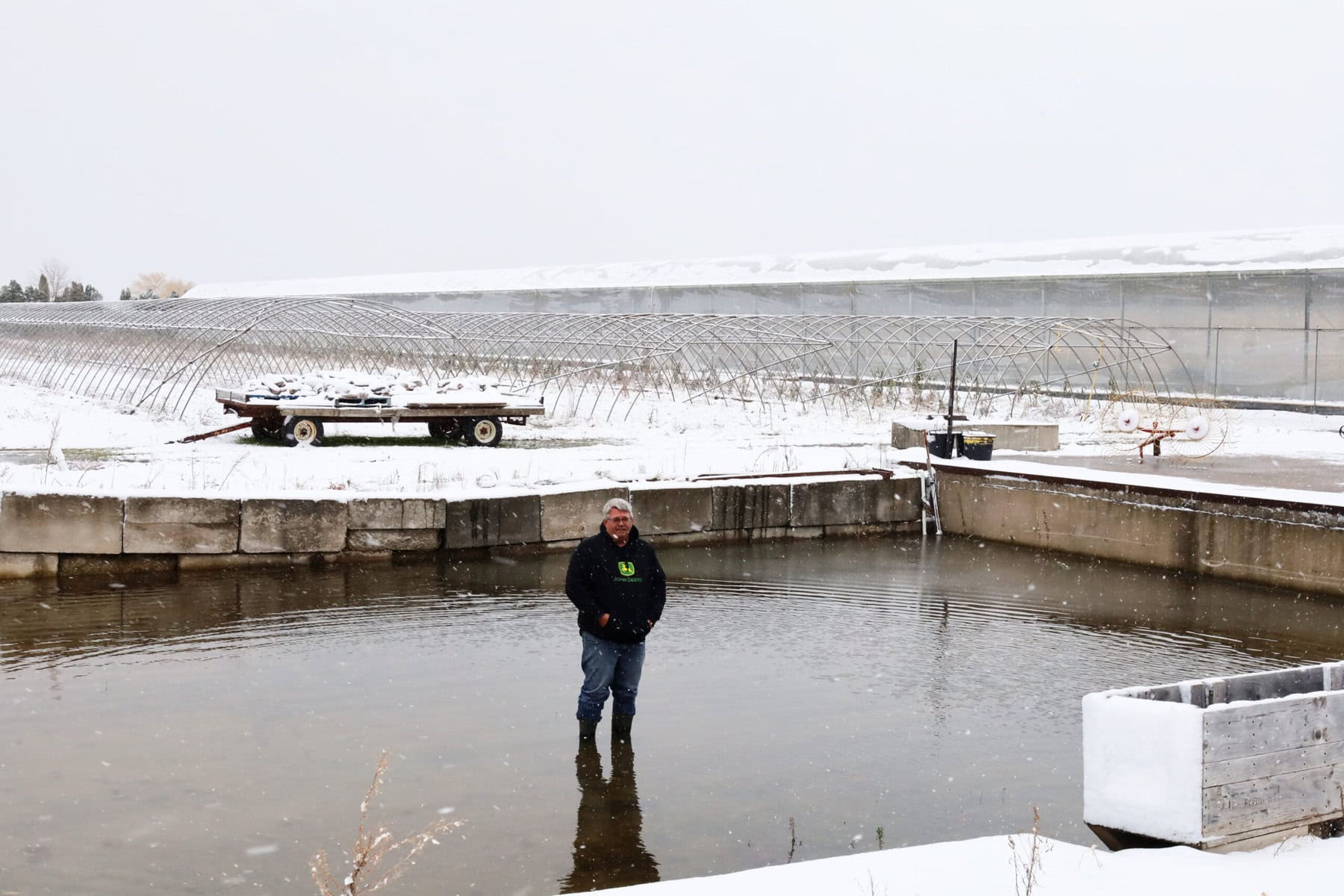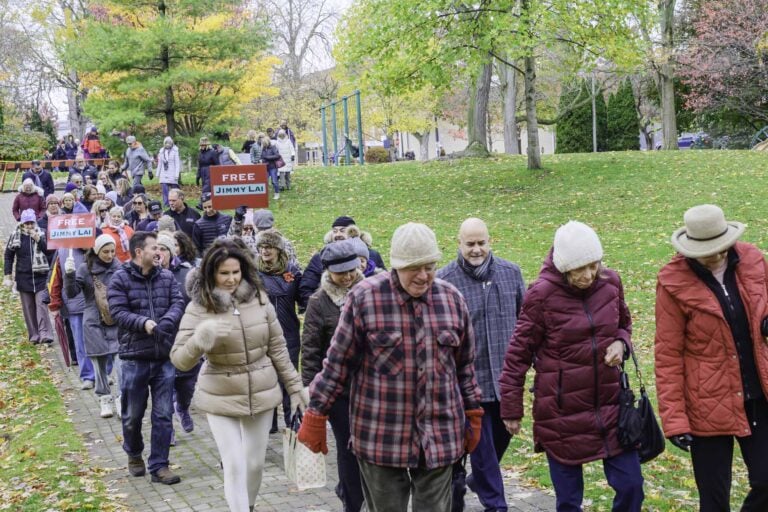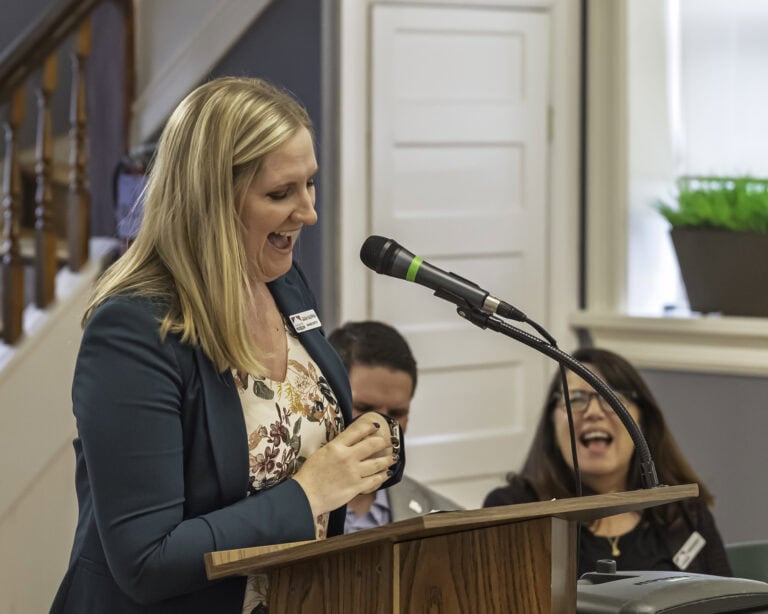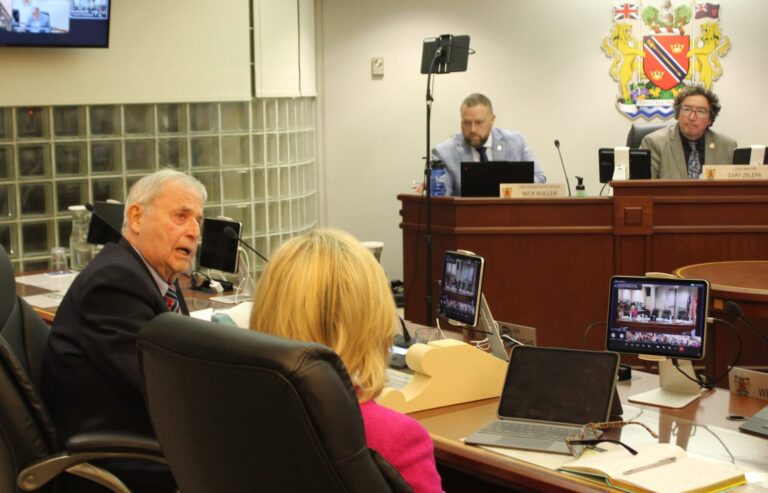Repeated flooding on a Niagara-on-the-Lake farm has pushed grower Michael Watson to give the Town of NOTL an ultimatum.
After offering the town an Oct. 31 deadline to outline concrete steps to fix the problem, warning he’d take legal action if it didn’t, he’s now giving it until Nov. 30 to provide a full report before he files a formal information request and takes the first steps in opening up what could be a lawsuit.
Watson says the flooding on his farm happens because water from west of Concession 4 is running into the Szockyj drain, although it’s not supposed to.
The town says those areas were built to drain the other way — toward storm ponds, not into the drain.
But major flooding hit Watson’s property twice in 2024, he said: on Jan. 26 and July 10.
It damaged hundreds of young peach trees, about 20 to 30 per cent of his greenhouse production area and a third-party truck with electronics inside, and caused lasting humidity problems.
Watson estimates five to ten acres of orchard and field production space, plus two acres of “critical infrastructure, such as loading docks and parking area,” have been affected.
“We want the water entering the Szockyji drain — that should not be — to be redirected, as it should be. Not to flood our farms,” he told The Lake Report.
He’s asking the town to provide a detailed report by Nov. 30 — covering all correspondence, meetings, inspections, surveys and maintenance related to the Szockyj drain since January 2024 — warning that if it doesn’t, he’ll file an extensive Municipal Freedom of Information and Protection of Privacy Act request to obtain those records, noting he’d pursue other legal remedies, including a statement of claim, if the issue wasn’t solved after Dec. 1.
Watson said he’s still figuring out how much damage the flooding did in financial terms. He added that he held off on planting specialty crops this year until the situation with the drain is resolved.
The town is aware of “isolated flooding events” connected to the drain “during severe weather occurrences,” said Darren MacKenzie, the town’s acting director of public works and infrastructure.
Staff reviewed drainage patterns and stormwater infrastructure in the area after rain, storm and melt events in 2024 led nearby residents to raise concerns.
Several solutions were studied, including both piped and open-ditch options, but only a piped system was found to be “technically viable,” said MacKenzie.
Alternative connections are still being investigated by staff, “including through existing storm infrastructure along Loretta Drive,” to see if rerouting is possible, “without contravening watershed boundaries outlined in the 2005 report.”
In Watson’s Oct. 29 email addressed to the town’s irrigation and drainage superintendent, Brandon Enns, he said town staff had discussed several costly options to redirect water.
However, an implementation timeline for the latest solution proposed “was not something you were able to commit to as of yesterday,” he wrote.
“Therefore, I am going to provide you dates that I am prepared to commit to, regarding my next steps.”
It was then that he gave staff the Oct. 31 and Nov. 30 deadlines for action.
Watson said he met with Enns several times and had three meetings with staff at town offices between February 2024 and this past August.
Issuing a cease-and-desist notice over email to Enns on Feb. 13 — to stop directing waters from the subdivision into the west lateral of the Szockyj drain — Watson then agreed on March 20 to hold off until the end of November, as Enns and his colleagues had committed to finding a solution during their meeting that day.
MacKenzie said staff looked at engineering drawings, design briefs and the 2005 Szockyj drain engineer’s report “to better understand flow patterns and identify potential contributing factors.”
It determined that water from the developed lands west of Concession 4 was designed to drain westward toward storm ponds, rather than into the Szockyj drain.
The town also hired engineering consultant K. Smart Associates to reassess the 2005 report and evaluate options for redirecting water.
Watson said he’s tried to stay patient through years of meetings and correspondence with town staff.
“Like many farmers in Niagara-on-the-Lake — who invest their time and equity so others will have food security (and) endure many challenges and obstacles, striving to be successful — I recognize stress that farming can deliver to some,” he said, calling the stress “often a silent killer in our industry.”
“I am not happy having to take a legal approach, but I am certain justice will prevail — eventually.”
The town said it inspects and maintains the drain and communicates “regularly” with affected landowners “as part of routine maintenance,” MacKenzie said.
“Staff remain in contact with drainage consultants to determine next steps, which may include updating the engineer’s report.”










